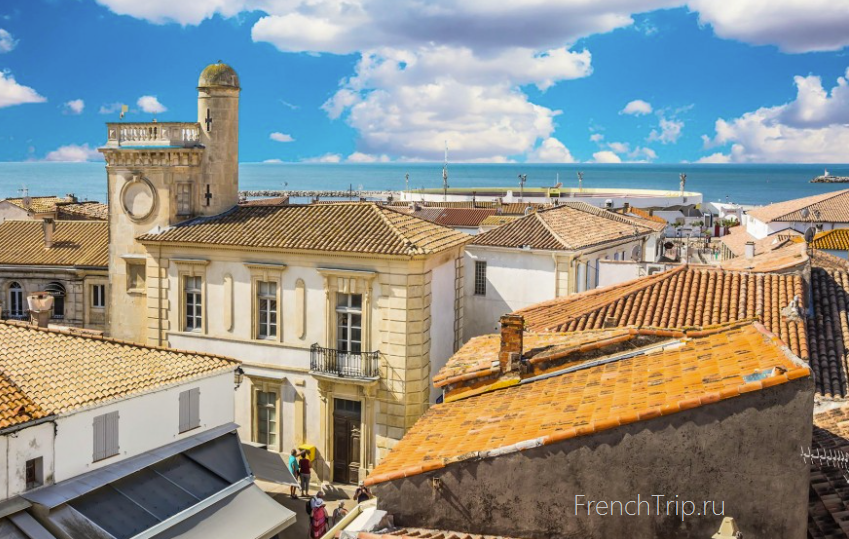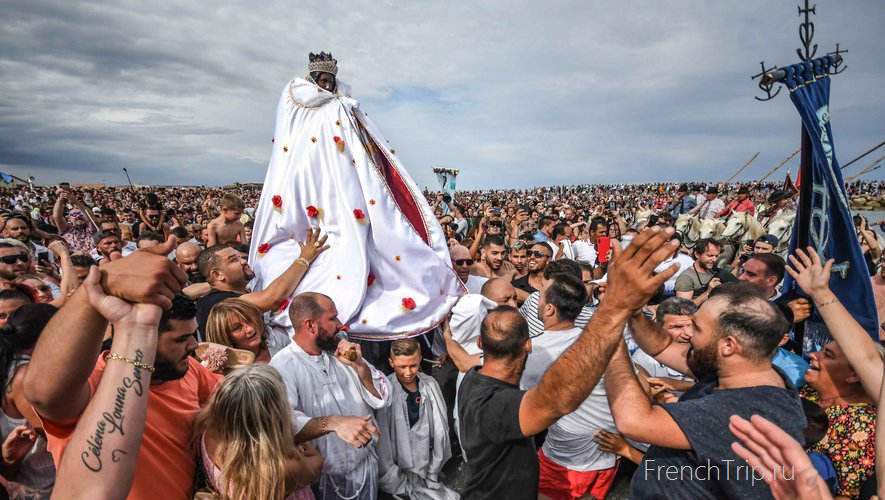History of Saintes-Maries-de-la-Mer

Saintes-Maries-de-la-Mer is a small coastal town located in the Camargue region of southern France. Its history is rich and diverse, spanning centuries of human activity and cultural influences. Saintes-Maries-de-la-Mer’s history is a blend of Christian pilgrimage, maritime heritage, artistic inspiration, and natural beauty. It remains a unique and culturally significant town in the south of France.
History of Saintes-Maries-de-la-Mer
The history of Saintes-Maries-de-la-Mer can be traced back to ancient times. The area was inhabited by the Celts and later the Greeks and Romans. The Romans established a settlement called “Ra” at this location, which is the earliest known name associated with the town.
Ancient Origins
The first mention of Saintes-Maries-de-la-Mer dates back to the 4th century when the town was known as “Ra,” derived from the Latin word “ratis,” meaning boat. In the 6th century, Archbishop of Arles played an active role in the area by constructing a monastery dedicated to Saint Mary, who was revered by sailors. Consequently, the town became known as Notre-Dame-de-Ratis in honor of the three Marys who arrived by boat. Later, the name changed to Notre-Dame-de-la-Mer, which translates to “Our Lady of the Sea,” a synonym for the Virgin Mary.
According to legend, in the year 40 AD, several individuals were put in a boat and cast adrift at sea without sails or provisions, destined for certain death due to Christian persecution. Among them were three Marys: the sister of the Virgin Mary, Mary the mother of James the Elder and John the Apostle, and Mary Magdalene along with her servant Sarah. Miraculously, the boat washed ashore near a small village.
In gratitude for their rescue, they built a small chapel in honor of the Virgin Mary and continued to spread the Christian faith and provide healing until their deaths. After their passing, local residents began to venerate their relics. In the 11th century, the remains of the saints were interred in a newly constructed church. The relics of Sarah, whom the Romani people consider their patron saint, are kept in the crypt, while the relics of the Marys are placed in a specially built niche. A sculpture of the two Marys in a blue boat, along with the dark-skinned Sarah, is adorned with flowers.

Christian Heritage
The town’s modern name is derived from its Christian history. In the 9th century, the relics of Saint Mary Jacobe and Saint Mary Salome, along with their maid Sarah, were believed to have washed ashore near the town. This event led to the construction of a church in their honor, and the town became known as “Saintes-Maries” (Saint Marys).
Between 860 and 900 AD, Saintes-Maries-de-la-Mer and its surrounding region suffered two devastations. First, the city was raided by the Normans, and later, it was invaded by Arab conquerors.
Medieval Era
During the Middle Ages, the town was an important pilgrimage site. Pilgrims from all over Europe came to venerate the relics of the three Marys, and the church became a center of religious activity. The town’s fortifications and walls date back to this period.
Renaissance and Beyond
In the 16th century, the town faced threats from pirates and underwent several defensive upgrades. It was also a period of prosperity due to salt production and maritime trade.
In 1720, Saintes-Maries-de-la-Mer was struck by an epidemic of bubonic plague, which had been brought into the port of Marseille and significantly reduced the population of Provence.
During the anti-clerical sentiments of the French Revolution, the main temple of the city was partially destroyed, and the stones from its walls were used in the construction of new houses.
19th Century
Saintes-Maries-de-la-Mer underwent a series of changes during the 19th century. The arrival of the railway in the 19th century connected the town to other parts of France, facilitating trade and tourism.
The town acquired its current name, Saintes-Maries-de-la-Mer, in 1838 in honor of the three Marys. Shortly thereafter, Saint-Maries became a pilgrimage destination.
In 1892, a narrow-gauge railway was built, connecting the town to Arles. However, it was closed in 1953.
Artistic Influence
The town gained popularity among artists and writers in the 19th and 20th centuries. Figures like Vincent van Gogh and Pablo Picasso drew inspiration from the unique landscapes and vibrant culture of Saintes-Maries-de-la-Mer.
Vincent van Gogh depicted views of Saintes-Maries in his paintings in June 1888.
Modern Times
Today, Saintes-Maries-de-la-Mer is a popular tourist destination known for its natural beauty, including the Camargue Regional Nature Park, which is famous for its wetlands, wildlife, and wild horses. The town continues to attract visitors with its rich history, annual festivals, and picturesque landscapes.
Today, the town is home to approximately 2,800 residents.
→ Return to Saintes-Maries-de-la-Mer travel guide
Archives
Calendar
| M | T | W | T | F | S | S |
|---|---|---|---|---|---|---|
| 1 | 2 | 3 | 4 | 5 | 6 | 7 |
| 8 | 9 | 10 | 11 | 12 | 13 | 14 |
| 15 | 16 | 17 | 18 | 19 | 20 | 21 |
| 22 | 23 | 24 | 25 | 26 | 27 | 28 |
| 29 | 30 | 31 | ||||